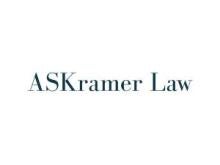What is a hedged executory contract?
A “hedged executory contract” is another type of transaction that is eligible for integration under Code Section 988(d). A hedged executory contract results when a taxpayer enters into an executory contract and a hedge of that contract, provided the taxpayer meets all of the requirements of Treasury Regulations.[1]
What is an executory contract?
An executory contract is defined as a legal agreement entered into by the taxpayer before the accrual date to (1) purchase or sell property used or held in the ordinary course of the taxpayer’s business, or (2) acquire or perform service(s) that will be transacted in nonfunctional currency (or an amount determined with reference to a nonfunctional currency) in the future.[2] For example, an agreement to buy equipment for a business in the future for Euros is an executory contract. Once the executory contract reaches its accrual date[3], it will be treated as an account payable or receivable.[4]
What are some exceptions to the definition of an executory contract?
The Treasury Regulations set out exceptions to the definition of an executory contract:
- A section 988 transaction is not an executory contract.[5] For example, a forward contract to purchase nonfunctional currency is not an executory contract.[6]
- A transaction that hedges the period between the trade date and the settlement date for certain securities.[7]
How can a taxpayer hedge an executory contract?
Once an executory contract[8] is hedged, it becomes a “hedged executory contract”[9] if it meets all of the following requirements:
- The executory contract and the hedge are identified as a hedged executory contract.[10]
- The hedge is entered into on or after the date the executory contract is entered into and before the accrual date on which the hedge is entered into—that is, settled or closed, or a nonfunctional currency is deposited in an account with a bank or other financial institution, and it is acquired and deposited.[11]
- The executory contract is hedged (in whole or in part) throughout the period beginning with the date the hedge is identified[12] and ending on or after the accrual date.[13]
- None of the parties to the hedge are related to each other.[14]
- In the case of a QBU with a residence outside the United States, both the executory contract and the hedge are properly reflected on the books of the same QBU.[15]
- Both the executory contract and the hedge are entered into by the same individual, partnership, trust, estate, or corporation.[16] The same corporation must enter into both the executory contract and the hedge, without regard to whether that corporation is a member of a consolidated group.[17]
- If a foreign person engaged in a U.S. trade or business enters into an executory contract or a hedge through such trade or business, all items of income and expenses associated with the transaction must be effectively connected with the U.S. trade or business throughout the term of the hedged executory contract.[18]
What qualifies as a hedge of an executory contract?
A hedge of an executory contract includes the following types of transactions:
- A deposit of a nonfunctional currency in a hedging account;
- A forward contract or futures contract as described in Treasury Regulation sections 1.988-1(a)(1)(ii) and 1.988-1(a)(2)(iii); and
- A combination of items that reduces the risk of exchange rate fluctuations by reference to the taxpayer’s functional currency with respect to nonfunctional currency payments made or received under an executory contract;[19] and
- An option contract as described in Treasury Regulation sections 1.988-1(a)(1)(ii) and (2)(iii) if the option’s expiration date is on or before the accrual date.[20]
Can a series of hedges receive integrated treatment as a single hedge?
Yes. When a transaction constitutes a hedged executory contract, a taxpayer can close out the hedge, enter into a new hedge, and retain integrated treatment if certain conditions are met. A taxpayer can opt to integrate a series of hedges as an integrated hedge if the executory contract is hedged in whole or in part throughout the period beginning with the date the hedge is identified[21] and ending on or after the accrual date.[22] A taxpayer meets this requirement if the hedge that succeeds a terminated hedge is entered into no later than the business day following the termination.[23]
What is a “hedging account”?
A hedging account is an account established with a bank or other financial institution that is used exclusively for deposits of nonfunctional currency to hedge executory contracts.[24] To determine the tax basis of units in such a hedge account, only those units in the account as of the accrual date are taken into account.[25] A taxpayer can adopt any reasonable convention as consistently applied to all hedging accounts in order to determine which units make up the hedge and its tax basis at the accrual date.[26]
Are there any identification rules that must be met to have a hedged executory contract?
Yes. Before the close of the date on which the taxpayer enters into the hedge, the taxpayer must record (1) a clear description of the executory contract and the hedge,[27] and (2) state that the transaction is being identified in accordance with Treasury Regulation section 1.988-5(b)(3).[28] The IRS can apply these identification provisions after the date the hedge is entered into if the taxpayer met all of the requirements to have a hedged executory contract but (a) the taxpayer does not meet one or more of the identification requirements and (b) the IRS concludes, on the basis of the facts and circumstances, that the executory contract is hedged. The IRS can make “appropriate adjustments,”[29] applying Treasury Regulation section 1.988-5(b) “regardless of whether the executory contract and the hedge are held by the same taxpayer.”[30]
How are hedged executory contracts taxed?
Under the foreign currency hedging rules at section 988(d), an executory contract and the hedge are integrated. This means that the amounts paid or received under the hedge are treated as paid or received under the executory contract, together with any subsequent account payable or receivable, or that portion to which the hedge relates.[31] Exchange gain or loss is not recognized on the hedge.[32] And, if the executory contract becomes an account payable or receivable on the accrual date, exchange gain or loss is not recognized on the payable or receivable for the period covered by the hedge.[33]
Can a partially hedged executory contract be integrated?
Yes. To integrate an executory contract and a partial hedge, the taxpayer must treat the amounts paid or received in a functional currency under the hedge as being paid or received under that portion of the executory contract that is being hedged, or any subsequent account payable or receivable.[34] Amounts attributable to the portion of the executory contract that is not hedged are translated into functional currency on the accrual date, and exchange gain or loss on the unhedged amount is realized when a payment is made or received with respect to any payable or receivable arising on the accrual date.[35]
What is the tax result if a hedged executory contract is disposed of before the accrual date of the executory contract?
If a taxpayer disposes of (or otherwise terminates) a hedged executory contract prior to the accrual date, the hedge is treated as having been sold for its fair market value on the date of the executory contract disposal, with any gain or loss realized and recognized on that date.[36] The spot rate on the date the hedge is treated as sold is used to determine subsequent exchange gain or loss on the hedge.[37]
What is the tax result if the hedge portion of a hedged executory contract is disposed of prior to the accrual date of a hedge?
If a taxpayer disposes of a hedge that has been identified as being a part of a hedged executory contract prior to the accrual date, any gain or loss on disposition is not recognized. Rather, it is treated as an adjustment to the income from, or expense of, the services performed (received) under the executory contract, or to the amount realized or basis of the property sold (purchased) under the executory contract.[38]
What is the tax result if a taxpayer disposes of the hedge portion of a hedged executory contract on or after the accrual date?
If a taxpayer identifies a hedge as part of a hedged executory contract and the taxpayer disposes of the hedge on or after the accrual date, gain or loss is not recognized on the hedge.[39] The hedge is disposed of on the booking date.[40]
Is a hedged executory contract exempt from the straddle rules and section 1256 treatment?
Yes. An executory contract and its hedge are exempt from both the straddle rules and from section 1256 treatment.[41] If a hedged executory contract is part of a straddle before the hedge is established, however, the straddle rules and section 1256 treatment (if applicable) may apply.[42]
Can a taxpayer treat certain securities positions as hedges between the trade date and settlement date?
Yes. A cash or accrual basis taxpayer can treat any gain or loss on a hedge as an adjustment to the amount realized on the adjusted basis of stock or securities sold or purchased if the taxpayer:
- purchases (sells) stocks or securities traded on an established securities market,
- hedges all or part of the purchase (sale) for any part of the period beginning on the trade date and ending on the settlement date,[43] and
- identifies the hedge and the underlying stock or securities as an integrated transaction under Treasury Regulation section 1.988-5(b)(3).[44]
In this context, the term, hedge, is taken to mean a deposit of nonfunctional currency in a hedging account, a forward or futures contract,[45] or combination(s) of contracts that reduces the risk of exchange rate fluctuation for the period beginning on the trade date and ending on the settlement date.[46] The straddle rules and section 1256 treatment do not apply to the hedge and the underlying stock or securities because it is as an integrated transaction subject to Treasury Regulation section 1.988-5(c).[47]
Conclusion
The tax rules for foreign currency transactions can be quite complex, and the election into section 988 and the election out of section 988 can be quite confusing for taxpayers and their advisors. With a careful eye to the section 988 rules, taxpayers can successfully navigate these rules and avoid unexpected tax results.
[1] Treas. Reg. § 1.988-5(b)(1).
[2] Treas. Reg. § 1.988-5(b)(2)(ii).
[3] The accrual date is the date when the item of income or expense (including a capital expenditure) that relates to an executory contract is required to be accrued under the taxpayer’s method of accounting (Treas. Reg. § 1.988-5(b)(2)(iv)). The payment date is the date when payment is made or received with respect to an executory contract, or the subsequent corresponding account payable or receivable. Treas. Reg. § 1.988-5(b)(2)(v).
[4] Treas. Reg. § 1.988-5(b)(2)(ii).
[5] Treas. Reg. § 1.988-5(b)(2)(ii)(B).
[6] Id.
[7] Id. Those transactions can be Code § 988(d) hedges if they meet Treas. Reg. § 1.988-5(c).
[8] As defined in Treas. Reg. § 1.988-5(b)(2).
[9] As defined in Treas. Reg. § 1.988-5(b)(2)(iii).
[10] Treas. Reg. §§ 1.988-5(b)(2)(i)(A), 1.988-5(b)(3).
[11] Treas. Reg. § 1.988-5(b)(2)(i)(B).
[12] In accordance with Treas. Reg. §1.988-5(b)(3).
[13] Treas. Reg. § 1.988-5(b)(2)(i)(C).
[14] As defined in Code § 267(b) or § 707(c)(1); Treas. Reg. § 1.988-5(b)(2)(i)(D).
[15] Treas. Reg. § 1.988-5(b)(2)(i)(E).
[16] Treas. Reg. § 1.988-5(b)(2)(i)(F).
[17] Id.
[18] Treas. Reg. § 1.988-5(b)(2)(i)(G).
[19] Treas. Reg. § 1.988-5(b)(2)(iii)(A).
[20] Id. The premium paid for an option that lapses is integrated with the executory contract.
[21] In accordance with the provisions of Treas. Reg. § 1.988-5(b)(3)(i).
[22] Treas. Reg. § 1.988-5(b)(2)(iii)(B).
[23] Id.
[24] Treas. Reg. § 1.988-5(b)(2)(iii)(D).
[25] Id.
[26] Id.
[27] Treas. Reg. § 1.988-5(b)(3)(i).
[28] Id.
[29] Treas. Reg. § 1.988-5(b)(3)(ii).
[30] Id.
[31] Treas. Reg. § 1.988-5(b)(4)(i).
[32] Id.
[33] Id.
[34] Treas. Reg. § 1.988-5(b)(4)(ii).
[35] Id.
[36] Treas. Reg. § 1.988-5(b)(4)(iii)(A).
[37] Id.
[38] Treas. Reg. § 1.988-5(b)(4)(iii)(A).
[39] Treas. Reg. § 1.988-5(b)(4)(iv).
[40] Defined in Treas. Reg. §1.988-2(c)(2) as the date the item of gross income or receipt is accrued or otherwise taken into account of the payable or receivable for purposes of computing exchange gain or loss. See Treas. Reg. §1.988-5(b)(4)(iv), Example 3.
[41] Treas. Reg. § 1.988-5(b)(4)(v).
[42] Id.
[43] Treas. Reg. § 1.988-5(c).
[44] Id.
[45] As described in Treas. Reg. §§ 1.988-1(a)(1)(ii) and (2)(iii).
[46] The provisions of Treas. Reg. §§ 1.988-5(b)(2)(iii)(D) and (E) also apply.
[47] Treas. Reg. § 1.988-5(c)(2).




 />i
/>i
